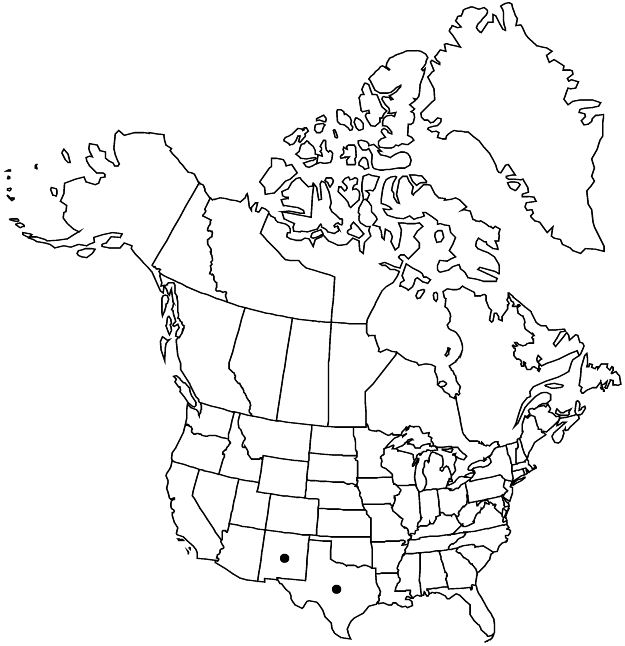Euphorbia theriaca
Rhodora 43: 242, plate 660, fig. A. 1941.
Herbs, annual, with slender taproot. Stems prostrate to reclining, not mat-forming, 5–30 cm, glabrous. Leaves opposite; stipules usually distinct, occasionally connate basally on lower side of stem, subulate or scalelike, usually entire, occasionally 2-fid or margin sparsely ciliate, 0.4–1 mm, glabrous; petiole 0.7–1.2(–1.5) mm, glabrous; blade ovate, oblong, orbiculate, or obovate, 2–7.1 × 1–3.5 mm, base slightly asymmetric, rounded, margins entire, often revolute on drying, apex usually rounded, occasionally slightly emarginate, surfaces glabrous; venation usually obscure, only midvein conspicuous. Cyathia usually solitary at distal nodes, rarely clustered on short, axillary branches; peduncle 0.3–1.3 mm. Involucre usually turbinate-campanulate to hemispheric, occasionally suburceolate, 1–1.8 × 0.9–1.4 mm, glabrous; glands 4, yellow-green to red-purple, sessile or short-stipitate, subcircular to slightly elliptic, 0.2–0.5 × 0.2–0.7 mm; appendages absent or white to pink, semilunate or forming rim at edge of gland, (0–)0.1–0.4 × (0–)0.3–0.9 mm, entire or slightly crenate. Staminate flowers 15–36. Pistillate flowers: ovary glabrous; styles 0.3–0.5 mm, 2-fid 1/2 length. Capsules broadly ovoid, 1.1–1.6 × 1.5–1.8 mm, glabrous; columella 1.2–1.5 mm. Seeds whitish, reddish brown beneath coat, ovate, 4-angled in cross section, 0.8–1.2 × 0.5–0.8 mm, with (2–)3(–5) deep transverse ridges. 2n = 28.
Distribution

N.Mex., Tex., n Mexico.
Discussion
Varieties 2 (2 in the flora).
Selected References
None.
Key
| 1 | Involucral glands sessile, appendages absent. | Euphorbia theriaca var. theriaca |
| 1 | Involucral glands short-stipitate, appendages present, occasionally rudimentary. | Euphorbia theriaca var. spurca |